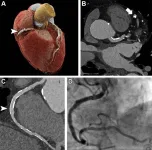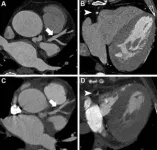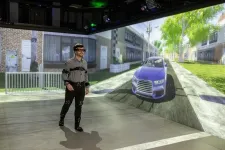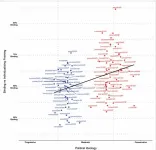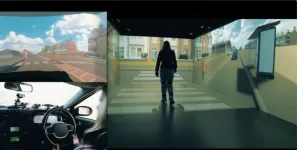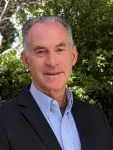(Press-News.org) OAK BROOK, Ill. – New ultra-high-resolution CT technology enables excellent image quality and accurate diagnosis of coronary artery disease in high-risk patients, a potentially significant benefit for people previously ineligible for noninvasive screening, according to a study published in Radiology, a journal of the Radiological Society of North America (RSNA).
Coronary artery disease is the most common form of heart disease. Coronary CT angiography (CCTA) is highly effective for ruling out coronary artery disease in patients at low or intermediate risk for the disease. Unfortunately, CCTA in a high-risk population is difficult due to a high prevalence of coronary calcifications and stents. Coronary calcifications tend to “bloom” on CCTA, making them appear more extensive than they really are. This results in overestimation of blockages and plaque and false-positive results.
“Consequently, patients may undergo unnecessary, often invasive, testing,” said study lead author Muhammad T. Hagar, M.D., from the Department of Diagnostic and Interventional Radiology at the University of Freiburg in Freiburg, Germany. “This is the reason why current guidelines do not recommend using CCTA in high-risk individuals.”
Ultra-high-resolution coronary CT angiography (UHR-CCTA) is a promising tool for the noninvasive assessment of patients at high risk for coronary artery disease. Because it uses recently introduced photon-counting CT scanners, it has not been extensively studied.
Dr. Hagar and colleagues compared the diagnostic accuracy of UHR-CCTA with that of the reference standard of invasive coronary angiography (ICA) in 68 patients. The patients had severe aortic valve stenosis, a common, serious valve disease that reduces or blocks blood flow from the heart to the aorta.
UHR-CCTA was highly sensitive and specific for coronary artery disease detection. It delivered a median overall image quality score of 1.5 on the 5-point Likert scale, where 1 is excellent and 5 is nondiagnostic. Almost 80% of segments rated as good or excellent.
The results suggest that the benefits of noninvasive imaging may soon be available to high-risk patients, Dr. Hagar said.
“It appears that the spectrum of patients benefiting from undergoing non-invasive CCTA has been significantly broadened by photon-counting detector technology,” he said. “This is excellent news for these patients and the imaging community.”
The high resolution of UHR-CCTA results from a greater number of emitted photons. This also increases radiation exposure compared with conventional CT scanners. However, Dr. Hagar noted that the technology is at a very early stage and that researchers are developing methods to reduce the amount of radiation exposure.
“Currently, the technique is feasible for high-risk patients, in whom the benefits outweigh the risks, but should not be applied to all patients referred for cardiac CT imaging,” he said.
While photon-counting CT is relatively scarce worldwide, experts anticipate that the technology will become more prevalent in the next 10 years.
“At the University of Freiburg, we had the privilege to work with the technology since its introduction and I am convinced that photon-counting CT is the beginning of a new generation of CT scanners, similar to the introduction to multislice CT 30 years ago,” Dr. Hagar said.
The researchers are exploring the diagnostic ability of photon-counting CT technology in other clinical scenarios such as oncological imaging. In the field of cardiac imaging, they are expanding their research to include subgroups for whom CT imaging is currently not feasible, such as patients with coronary stents. They also are looking into heart muscle assessment with photon-counting CT. Early findings suggest that the technology may improve soft tissue resolution. This would greatly benefit disease characterization.
“For me, these are exciting times, and it is just great to be part of a very active group working with this new technology,” Dr. Hagar said.
###
“Accuracy of Ultrahigh-Resolution Photon-counting CT for Detecting Coronary Artery Disease in a High-Risk Population.” Collaborating with Dr. Hagar were Martin Soschynski, M.D., Ruben Saffar, M.D., Alexander Rau, M.D., Jana Taron, M.D., Jakob Weiss, M.D., Thomas Stein, M.S., Sebastian Faby, Ph.D., Constantin von zur Muehlen, M.D., Philipp Ruile, M.D., Christopher L. Schlett, M.D., M.P.H., Fabian Bamberg, M.D., M.P.H., and Tobias Krauss, M.D.
In 2023, Radiology is celebrating its 100th anniversary with 12 centennial issues, highlighting Radiology’s legacy of publishing exceptional and practical science to improve patient care.
Radiology is edited by Linda Moy, M.D., New York University, New York, N.Y., and owned and published by the Radiological Society of North America, Inc. (https://pubs.rsna.org/journal/radiology)
RSNA is an association of radiologists, radiation oncologists, medical physicists and related scientists promoting excellence in patient care and health care delivery through education, research and technologic innovation. The Society is based in Oak Brook, Illinois. (RSNA.org)
For patient-friendly information on CT angiography, visit RadiologyInfo.org.
END
Self-driving revolution hampered by a lack of accurate simulations of human behaviour
Algorithms that accurately reflect the behaviour of road users - vital for the safe roll out of driverless vehicles - are still not available, warn scientists.
They say there is “formidable complexity” in developing software that can predict the way people behave and interact on the roads, be they pedestrians, motorists or bike riders.
To improve the modelling, a research team led by Professor Gustav Markkula from the Institute of Transport Studies ...
Fires in the wildland-urban interface (WUI) emit more toxic smoke than wildfires burning in natural vegetation, due to the chemicals in the structures, vehicles, and other manufactured goods that burn in fires in areas of human habitation. Amara Holder and colleagues surveyed the literature on emissions from urban fuels, finding 28 experimental studies that reported emission factors—emissions per unit of fuel burned—for various items, such as home furnishings, consumer electronics, and vehicle ...
Economically progressive candidates may fare better in US elections when delivering their message in terms of “binding values” such as patriotism, family, and respect for tradition, according to a study. Although large majorities of Americans favor increasing economic equality in the United States, candidates who promote policies intended to reduce economic inequality, such as raising the minimum wage or increasing access to health care, often fare poorly at the ballot box. One reason for their under-performance may ...
The telencephalon is the part of the brain responsible for executive functions in fish, according to an experimental study. Zegni Triki and colleagues used guppies (Poecilia reticulata) that had been selected over five generations to have smaller or larger telencephalons, resulting in a 10% size difference between “up selected” and “down selected” lines of fish. Total brain size was not significantly affected. The authors then presented 48 male fifth-generation fish from both lines with tests of cognitive flexibility, inhibitory control, and working memory—the three commonly accepted components ...
A model of human psychology could help self-driving cars interact with human drivers on the road, according to a study. Gustav Markkula and colleagues combined several computational psychological models into one master-model to simulate pedestrians attempting to cross a busy road and the human drivers on that road. The goal of the model was to capture the underlying cognitive mechanisms responsible for observed behavior. Computational models of Bayesian perception, theory of mind, behavioral game theory, long-term valuation of ...
A recent study unveiled the doorway that SARS-CoV2 uses to slip inside cells undetected.
SARS-CoV-2 uses the receptor angiotensin-converting enzyme 2, or ACE2, to infect human cells. However, this receptor alone does not paint a complete picture of how the virus enters cells. ACE2 is like a doorknob; when SARS-CoV-2 grabs it and maneuvers it precisely, this allows the virus to open a doorway to the cell’s interworking and step inside. However, the identity of the door eluded scientists.
Scott Hansen, an associate ...
The 2023 Warren Alpert Foundation Prize has been awarded to scientist David J. Lipman for his visionary work in the conception, design, and implementation of computational tools, databases, and infrastructure that transformed the way biological information is analyzed and accessed freely and rapidly around the world.
The $500,000 award is bestowed by The Warren Alpert Foundation in recognition of work that has improved the understanding, prevention, treatment, or cure of human disease. The prize is administered by Harvard Medical School.
Lipman will be honored at a scientific symposium on Oct. 11, 2023, hosted by HMS. For further information, visit ...
Two papers published by Macquarie University researchers reveal that most of us ignore the meter when a moral choice is clear, but we use it when the choice is more morally ambiguous. And some of us, about ten per cent, will do anything to win.
You are playing The Great Fire, a narrative computer game. It’s all about Frankie, an usher in a cinema in regional Australia in the 1940s, who is confronted by a murderous psychopath.
Along the way, players have to make choices which affect the progress and outcome of the game. Some are simple black and white decisions, such as ...
Adults who live in walkable neighborhoods are more likely to interact with their neighbors and have a stronger sense of community than people who live in car-dependent communities, report researchers at the Herbert Wertheim School of Public Health and Human Longevity Science at University of California San Diego.
The findings of the study, published online in the journal Health & Place, support one of six foundational pillars suggested by United States Surgeon General Vivek Murthy as part of a national strategy to address a public health crisis caused by loneliness, ...
HOUSTON, SAN DIEGO and LONDON ― The University of Texas MD Anderson Cancer Center and Replay today announced that the Food & Drug Administration (FDA) has issued a ‘safe to proceed’ for the Investigational New Drug (IND) application for NY-ESO-1 TCR/IL-15 NK, an engineered T cell receptor natural killer (TCR NK) cell therapy for advanced synovial sarcoma and myxoid/round cell liposarcoma. MD Anderson is the IND sponsor.
NY-ESO-1 TCR/IL-15 NK is being developed by Syena, an oncology-focused product company launched by Replay and MD Anderson based upon the scientific discoveries of Katy Rezvani, M.D., Ph.D., professor of Stem Cell ...
